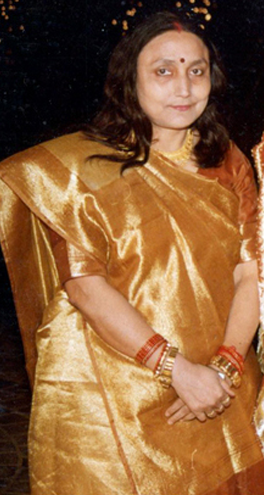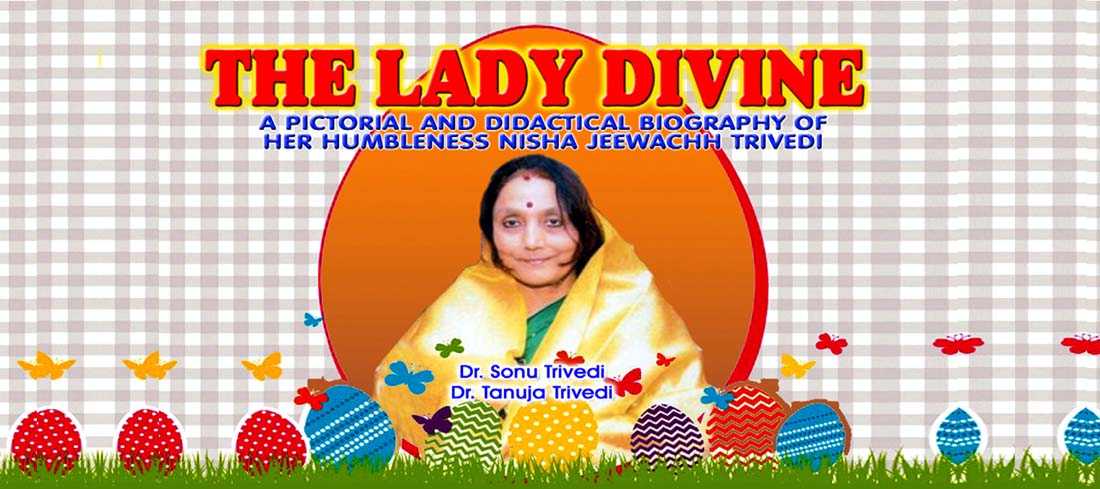What is Biography ?
Generally a
biography, or simply bio, is a detailed description of a person's
life. But this Book involves more than just the basic facts like
education, work, relationships, and death; it portrays her
experience of the life events. Unlike a profile or curriculum vitae
(resume), this Biography presents her life story, highlighting
various aspects of her life, including intimate details of
experience, and includes an analysis of her personality. Although
biographical works are usually non-fiction, but fiction has also
been used to portray her life.
We understand that biographical writings were regarded merely
as a subsection of history with a focus on a particular individual
of historical importance. The independent genre of biography as
distinct from general history writing, began to emerge in the 18th
century and reached its contemporary form at the turn of the 20th
century. Before started compiling information for giving this shape
of this Book in the form of a pictorial biography of our mother, we
started going through and perusing the Book by one of the earliest
biographers Cornelius Nepos, who published his
work Excellentium Imperatorum
Vitae ("Lives of outstanding generals") in 44 BC.
Longer and more extensive biographies were written in Greek
by Plutarch, in his Parallel Lives, published about 80 A.D. In this
work famous Greeks are paired with famous Romans, for example the
orators Demosthenes and Cicero, or the generals Alexander the Great
and Julius Caesar; some fifty biographies from the work survive.
Another well-known collection of ancient biographies is De vita
Caesarum ("On the Lives of the Caesars") by
Suetonius, written about AD 121 in the time of
the emperor Hadrian.
In the early Middle Ages (AD 400 to 1450), there was a
decline in awareness of the classical culture in Europe. During this
time, the only repositories of knowledge and records of the early
history in Europe were those of the Roman Catholic Church. Hermits,
monks, and priests used this historic period to write biographies.
Their subjects were usually restricted to the church fathers,
martyrs, popes, and saints. Their works were meant to be
inspirational to the people and vehicles for conversion to
Christianity (see Hagiography). One significant secular example of a
biography from this period is the life of Charlemagne by his
courtier Einhard.
In Medieval Islamic Civilization (c. AD 750 to 1258), similar
traditional Muslim biographies of Muhammad and other important
figures in the early history of Islam began to be written, beginning
the Prophetic biography tradition. Early biographical dictionaries
were published as compendia of famous Islamic personalities from the
9th century onwards. They contained more social data for a large
segment of the population than other works of that period.
By the late Middle Ages, biographies became less
church-oriented in Europe as biographies of kings, knights, and
tyrants began to appear. The most famous of such biographies was Le
Morte d'Arthur by Sir
Thomas Malory. The book was an account of the
life of the fabled King Arthur and his Knights of the Round Table.
Following Malory, the new emphasis on humanism
during the Renaissance promoted a focus on secular subjects, such as
artists and poets, and encouraged writing in the vernacular.
Giorgio Vasari's Lives of the Artists
(1550) was the landmark biography focusing on secular lives.
Vasari made celebrities of his subjects, as
the Lives became an early "bestseller". Two other developments are
noteworthy: the development of the printing press in the 15th
century and the gradual increase in literacy. Biographies in the
English language began appearing during the reign of Henry VIII.
John Foxe's Actes and
Monuments (1563), better known as Foxe's Book
of Martyrs, was essentially the first dictionary of the biography in
Europe, followed by Thomas Fuller's The History of the Worthies of
England (1662), with a distinct focus on public life.
The first modern biography, and a work which exerted
considerable influence on the evolution of the genre, was James
Boswell's The Life of Samuel Johnson, a biography of lexicographer
and man-of-letters Samuel Johnson published in 1791. While Boswell's
personal acquaintance with his subject only began in 1763, when
Johnson was 54 years old, Boswell covered the entirety of Johnson's
life by means of additional research. Itself an important stage in
the development of the modern genre of biography, it has been
claimed to be the greatest biography written in the English
language.
Boswell's work was unique in its level of research, which
involved archival study, eye-witness accounts and interviews, its
robust and attractive narrative, and its honest depiction of all
aspects of Johnson's life and character - a formula which serves as
the basis of biographical literature to this day. Biographical
writing generally stagnated during the 19th century - in many cases
there was a reversal to the more familiar hagiographical method of
eulogizing the dead, similar to the biographies of saints produced
in Medieval times.
A distinction between mass biography and literary biography
began to form by the middle of the century, reflecting a breach
between high culture and middle-class culture. However, the number
of biographies in print experienced a rapid growth, thanks to an
expanding reading public. This revolution in publishing made books
available to a larger audience of readers. In addition, affordable
paperback editions of popular biographies were published for the
first time. Periodicals began publishing a sequence of biographical
sketches.
The sciences of psychology and sociology were ascendant at
the turn of the 20th century and would heavily influence the new
century's biographies. The demise of the
"great man" theory of history was indicative of the emerging
mindset. Human behavior would be explained through Darwinian
theories. "Sociological" biographies conceived of their subjects'
actions as the result of the environment, and tended to downplay
individuality. The development of psychoanalysis led to a more
penetrating and comprehensive understanding of the biographical
subject, and induced biographers to give more emphasis to childhood
and adolescence.
Clearly these psychological ideas were changing the way
biographies were written, as a culture of autobiography developed,
in which the telling of one's own story became a form of therapy.
The conventional concept of heroes and narratives of success
disappeared in the obsession with psychological explorations of
personality.
Eminent Victorians set the standard for 20th century
biographical writing, when it was published in 1918.
The feminist scholar Carolyn Heilbrun
observed that women's biographies and autobiographies began to
change character during the second wave of feminist activism. She
cited Nancy Milford's 1970 biography Zelda, as
the "beginning of a new period of women's biography, because "[only]
in 1970 were we ready to read not that Zelda had destroyed
Fitzgerald, but Fitzgerald her: he had usurped her narrative."
Heilbrun named 1973 as the turning point in
women's autobiography, with the publication of May
Sarton's Journal of a Solitude, for that was the first
instance where a woman told her life story, not as finding "beauty
even in pain" and transforming "rage into spiritual acceptance," but
acknowledging what had previously been forbidden to women: their
pain, their rage, and their "open admission of the desire for power
and control over one's life."
In recent years, multimedia biography has become more popular
than traditional literary forms. Along with documentary biographical
films, Hollywood produced numerous commercial films based on the
lives of famous people. CD-ROM and online biographies have also
appeared. Unlike books and films, they often do not tell a
chronological narrative: instead they are archives of many discrete
media elements related to an individual person, including video
clips, photographs, and text articles.
In recent years, debates have arisen as to whether all
biographies are fiction, especially when authors are writing about
figures from the past. President of Wolfson
College at Oxford University, Hermione Lee argues that all history
is seen through a perspective that is the product of our
contemporary society and as a result biographical truths are
constantly shifting. So the history biographers write about will not
be the way that it happened; it will be the way they remembered it.
Debates have also arisen concerning the importance of space in
life-writing.
The biographies may be of the following types :
-- Autobiography
-- Biography
-- Pictorial Biography
-- Didactical Biography
-- Descriptive
Biography
-- Devotional Biography
Published by
The Ramphal
Foundation
A 45, Paryavaran Complex
New Delhi - 110030
Email : [email protected]
Website :
www.walkipedia.net/ramphal







